New to vegetable gardening? Start with squash. This easy-to-grow plant is almost guaranteed to thrive and produce an abundant crop, even if you’ve never put a hand in the soil before. Experienced gardener? Branch out from familiar zucchini and croockneck types and experiment with the literally dozens of other varieties available.
Are you a cook who wants to experiment with home-grown produce? Few vegetables offer such a range of options, from blossoms to nibble on to quickly grilled fruit in summer; squash also stores well long-term after the harvest for soups and winter dinners, not to mention quick breads, relishes and desserts.
All squash varieties are warm-season edibles, but you’ll sometimes see the terms “summer” and “winter" used to define them. These names refer to when that variety of squash is harvested and how well it keeps. Summer squashes are harvested and eaten, skin and all, when they’re still young, during the summer months. Winter squashes aren’t harvested until late in the summer or early fall, when the skin is hard and inedible. These varieties can be stored for some months, hence the “winter” designation. Whichever you grow, the planting and care requirements are the same.
Squash is traditionally known for its sprawling growth. However, if your space is limited, you can look for increasingly available compact or bush varieties.
More summer crops to start in spring
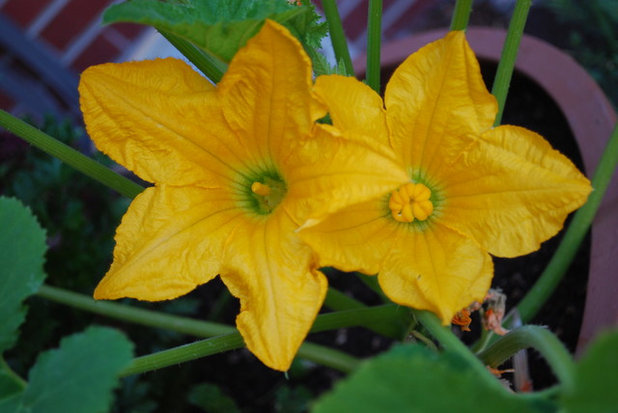
Jocelyn H. Chilvers
Days to maturity: 45 to 65 for summer squash; 60 to 110 for winter squash
Light requirement: Full sun
Water requirement: Regular
Favorites:Summer squash: Early Yellow Crookneck, Pic-N-Pic Hybrid and Sundance (crookneck); Benning’s Green Tint, Peter Pan and Sunny Delight (patty pan); Early Prolific and Zephyr (straightneck); Black Beauty, Cocozelle, Costata Romanesco, Eight Ball and Green Tiger Striped (zucchini)
Winter squash: Honey Bear, Table Ace, Table King and Table Queen (acorn); Banana; Blue Hubbard (hubbard); Bon Bon Buttercup and Early Buttercup (turban/buttercup); Burpee’s Butterbush, Pilgrim Hybrid and Waltham Butternut (butternut); Cornell’s Bush Delicata; Lakota; Spaghetti
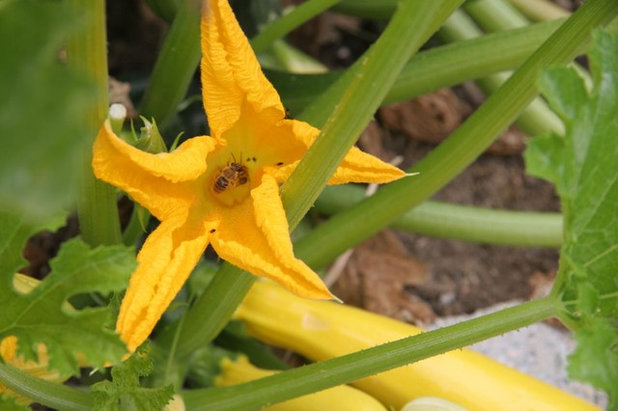
ecocentrix landscape architecture
Planting: Look for a warm, sunny site with well-drained, fertile soil. Sow seeds about two weeks after the last frost date when soil temperatures reach 70 degrees Fahrenheit (21 degrees Celsius). You can start seeds indoors about one week before that date.
For the vining varieties of summer squash, which can sprawl to 4 feet across, sow seeds 2 to 3 inches deep and 12 to 18 inches apart, in rows that are 6 to 8 feet apart. When seedlings emerge, thin to 4 to 5 feet apart. Set out seedlings with this same spacing.
You can also build hills or small mounds and sow four or five seeds per hill, in rows 7 to 8 feet apart. Thin to two plants per hill or set out two seedlings per hill. Sow “bush” squash seeds 1 foot apart, in rows 3 to 5 feet apart; thin to 2 to 4 feet apart or set out seedlings at this same spacing. Summer squash can also be grown in a pot; choose a large container for the best results.
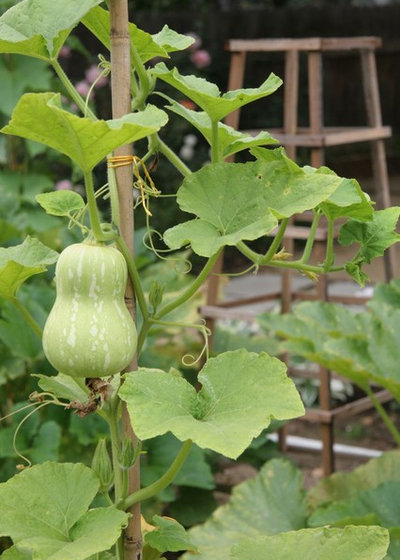
ecocentrix landscape architecture
Leave more space for the largest winter squash, such as banana squash and melon squash, whose fruits can reach 1 1/2 to 2 1/2 feet in length. To conserve space, try growing squash up on a very sturdy frame or trellis. This works for most squash, though zucchini seems to be an exception.
Caution: Do not overplant. Too many squash plants will result in you making midnight runs to leave your extra produce on the doorsteps of unsuspecting neighbors ... and they will hunt you down.
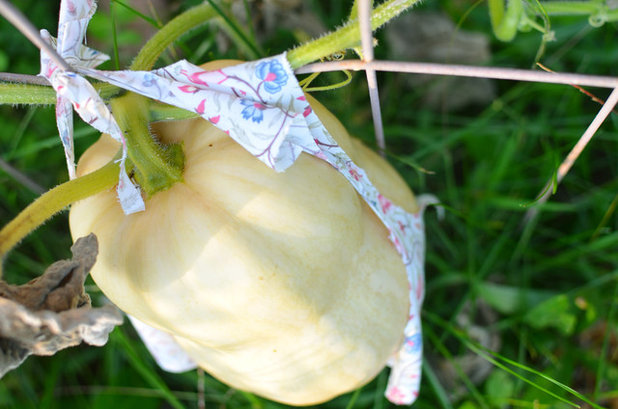
Amy Renea
Care: Water deeply after planting and water regularly throughout the growing season; about 1 inch per week is ideal. Either flood the soil beneath the plant or use a soaker hose; water on the leaves, stems and flowers can result in mildew. Fertilize once flowers have formed and the fruit is starting to set.
Once the fruit forms, place a board or piece of foam under winter squash to prevent rot. Support fruit on a trellis with a cloth bag or netting. The fruit will be heavy, so make sure your support is sturdy.
Aphids, cucumber beetles, cutworms, mites, nematodes and the aptly named squash borers and squash bugs may cause problems. Powdery and downy mildews can be a problem as well. Row covers can protect young plants from cutworms, slugs and squash bugs. Remove them once the plants start blossoming to ensure pollination. If squash borers are a problem, look for resistant varieties.
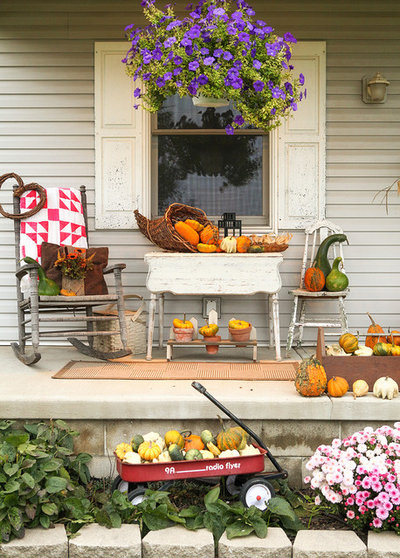
Julie Ranee Photography
Harvest: Summer squash are usually ready to harvest about two months after planting. Crookneck and scallop varieties should be about 2 to 3 inches long, while zucchini and straightneck varieties should be 4 to 6 inches long. Cut the stem close to the fruit with a sharp knife or shears. The stems can be irritating, so you may need to wear gloves. Once the fruits start to mature, you’ll need to stay on top of harvesting; overnight that tiny zucchini can become a monster.
Harvest winter squash once the vines have dried and the skin is hard enough that you can’t dent it with a fingernail. It can survive light frost but should be harvested before heavy frost. Cut the stem with a knife about 2 inches above the fruit. Let the fruit sit in a cool area outside until the stems shrivel, then store in a dry basement or garage with a temperature of around 55 degrees Fahrenheit (12 degrees Celsius). Winter squash keeps for two to six months.
More:How to Start Your Garden From Seeds
More guides to edible gardening





